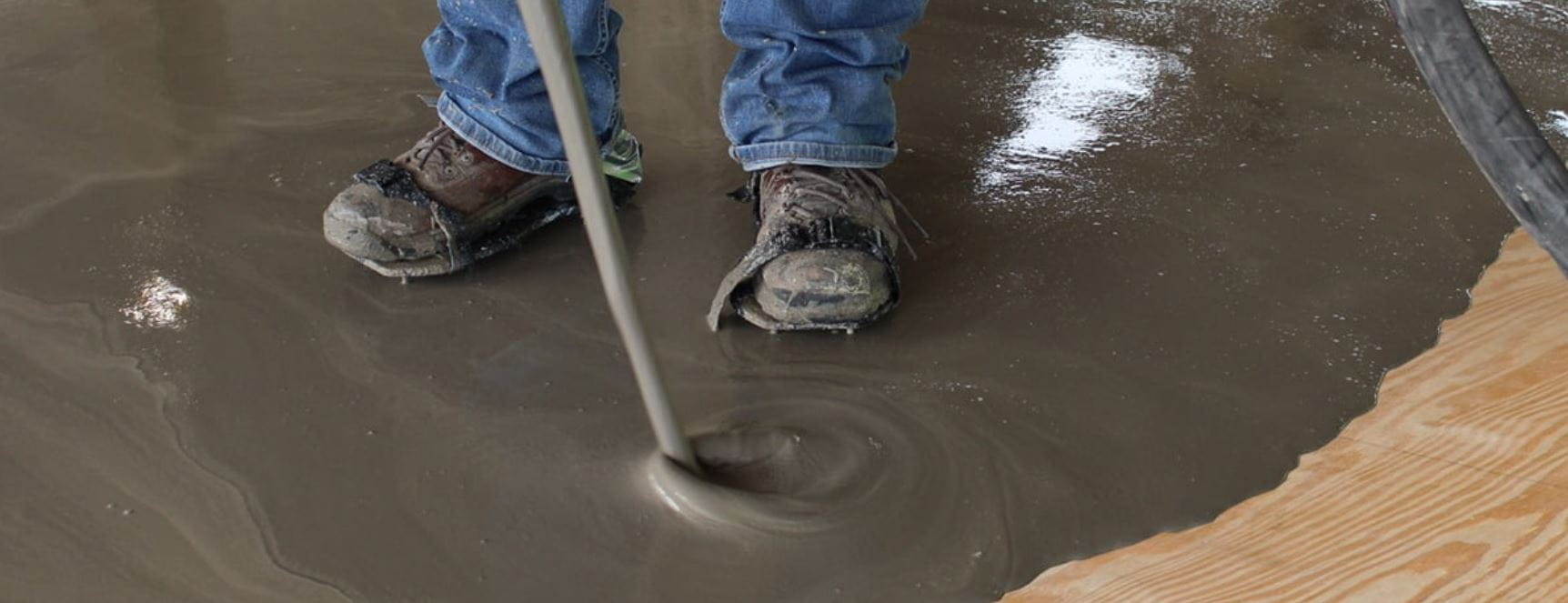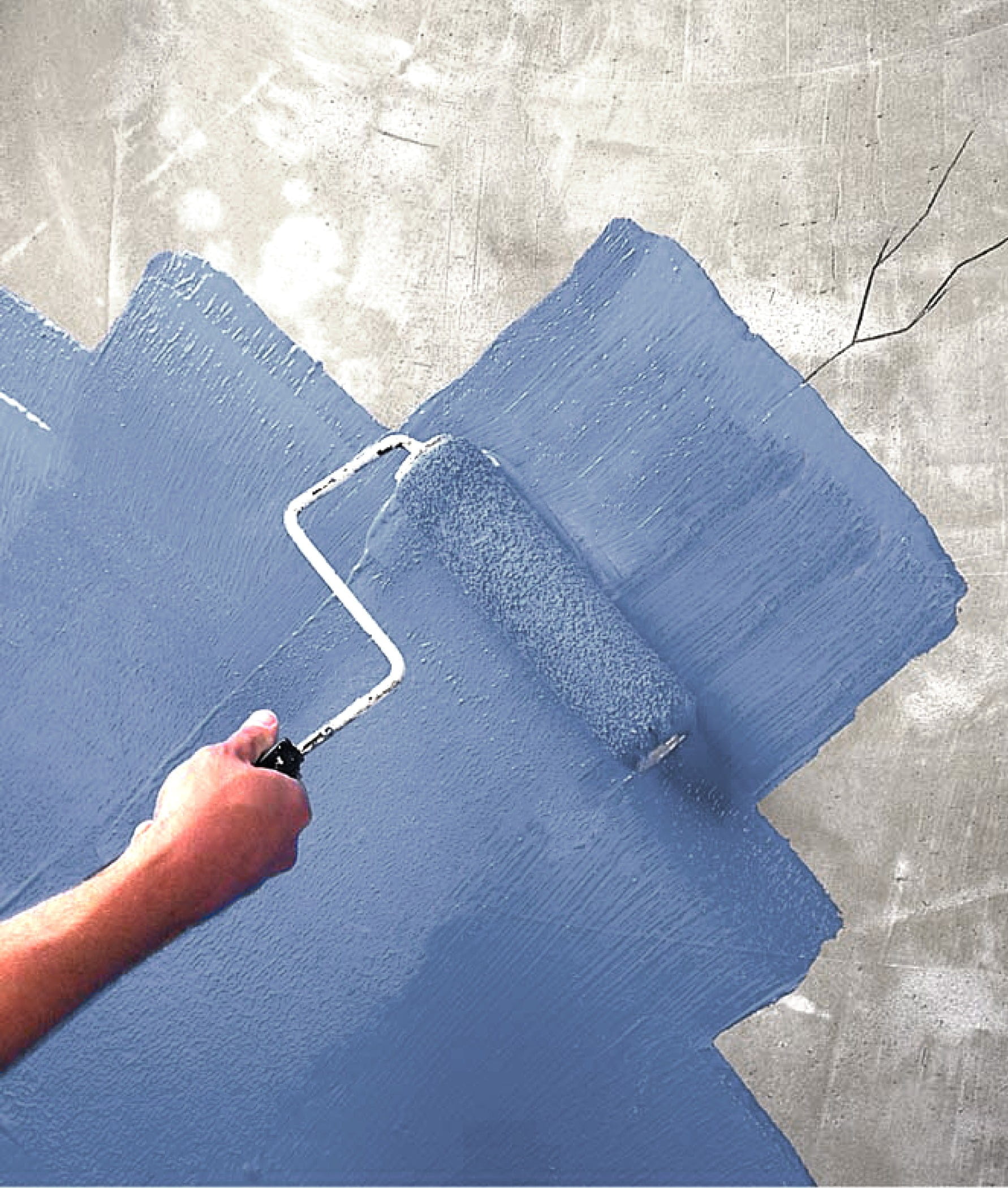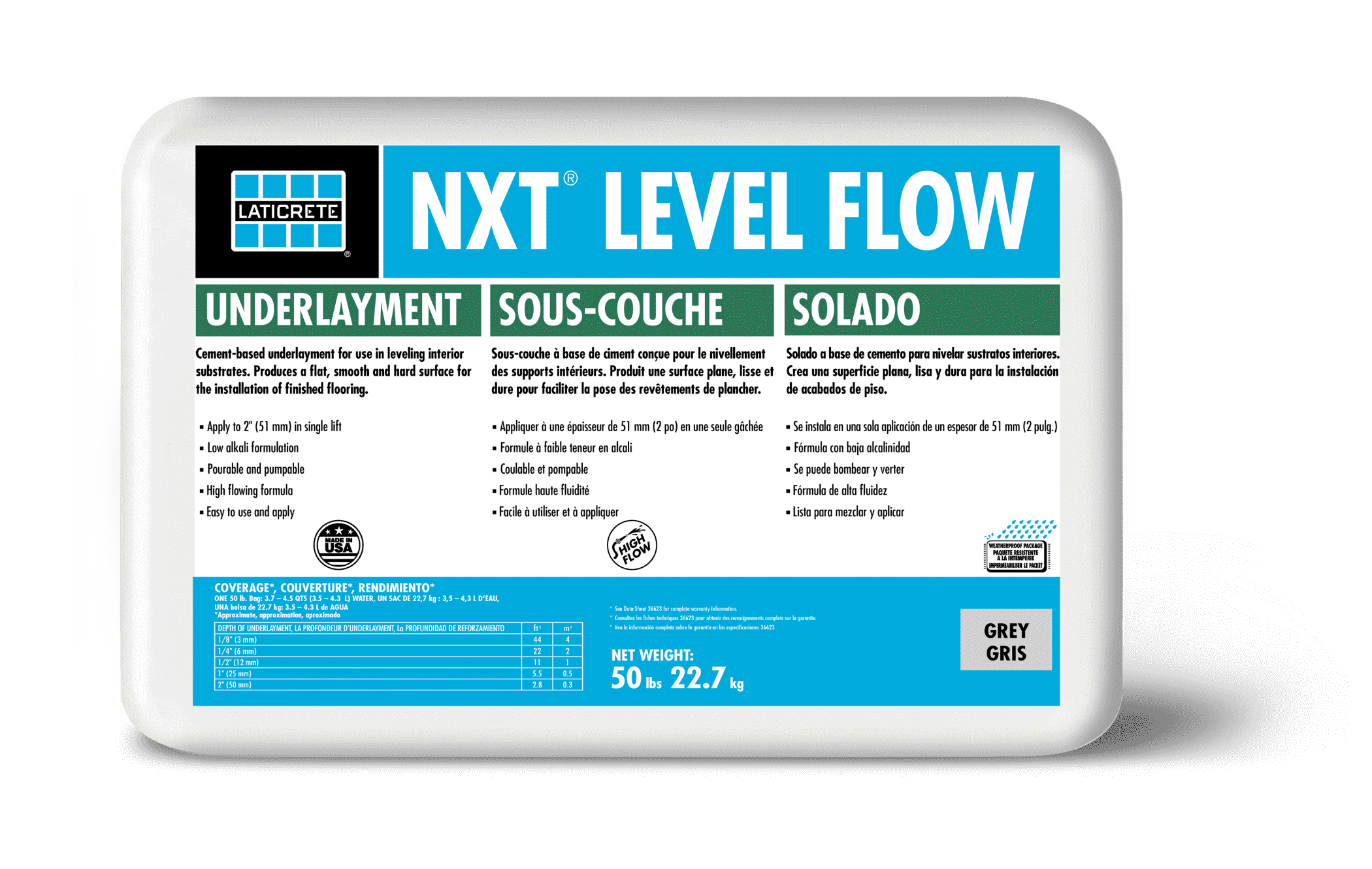Archive
Tagcloud
The Role of Underlayments and Self Leveling Products
Guest blog by Arthur Mintie, Vice President, Customer Experience at LATICRETE

// NXT® Level Plus is an advanced self-leveling underlayment that can be applied over plywood, oriented strand board (OSB) and gypsum, eliminating having to install lath.
The strength of a flooring system is one of the most important factors of a building’s structural integrity. The purpose of the substrate or subfloor is to evenly distribute the weight of everything in a room across the floor joists to maintain balance and provide support. It’s the flooring system that is responsible for carrying the weight of the walls, roof, furniture and people inside. Before applying finished flooring, experienced installers know to start with a flat substrate and carefully consider the surface preparation. Because of this, underlayments and floor leveling products are an ever important component of a successful floor installation. Offering many benefits depending on the flooring type, underlayment products can suit a variety of applications.
For example, an underlayment can act as a barrier between the subfloor and flooring material to provide a cushion and create space for expansion and contraction that occur with changes in temperature, humidity and natural movements. For tile floors in bathrooms, a tile underlayment is used to provide a flat surface for the finishes and add support to prevent the tile and grout from cracking when walked on, as well as provide flexibility to absorb movement.
Many floor underlayments also aid in uncoupling, anti-fracture and sound control capabilities. Whether the installation deals with a plywood substrate, is in need of total leveling or requires waterproofing, manufacturers have created underlayments to address whatever need imaginable. The three main categories of underlayments are backer boards, levelers and membranes.
Backer Boards and Self-Leveling Underlayments
Dating back to the 1970s, backer boards revolutionized the tile industry by providing a tile-ready surface in the form of a sheet or panel. While this method is tried and true, flooring contractors must be wary of the board’s shape becoming irregular or wavy due to deficiencies that cause the surface to be unlevel.
Rather than using backer boards, industry professionals are increasingly turning to self-leveling underlayments as a dependable solution to creating flat floors. The key to a successful installation using a self-leveling product is preparation. If the substrate is in poor condition, whether that be not dry enough or properly cleaned before using a self-leveling underlayment, the finished flooring performance will be compromised.
Installing a self-leveling product as an underlayment over an existing subfloor allows the installer to smooth out and correct surface imperfections for all types of flooring, including vinyl, wood, tile and carpet. This will result in a flat surface that is more durable, provides water resistance and may even inhibit growth of sometimes harmful microorganisms. Specialty floor preparation underlayments can also be used under high performance resinous floor coatings that are perfect for applications that must meet strict health code requirements, such as healthcare flooring. These seamless applications can also be custom designed with a wide variety of solid-color, quartz and simulated terrazzo coating systems.
Another benefit of most self-leveling pourable products is that they are quick-curing, reduce downtime for installers and allow following trades back to work quicker. For an industry increasingly facing greater time constraints with compressed schedules and controlled jobsite access, a rapid turnaround is ideal.

// FRACTURE BAN™ SC is a thin, load-bearing, self-curing liquid rubber polymer that can be easily applied in a single coat to form a flexible seamless anti-fracture membrane.
Membranes Offer Various Benefits
Membranes are another type of underlayment that provide a broad range of enhancements on the jobsite. Crack isolation and anti-fracture membranes, for example, can take the form of liquid applied, sheet goods and trowel applied systems, and are designed to isolate tile and stone finishes from minor in-plane substrate cracking. Additional characteristics such as waterproofing and sound reduction properties are also offered depending on the product.
Uncoupling membranes, usually available as plastic membrane systems, are geometrically configured to provide air space between the tile and substrate and allow independent movement between the two to limit the transfer of stresses. Uncoupling membranes can also have additional features, including a mechanism to receive floor warming cables, waterproofing or sound control. Before working with crack isolation and uncoupling membranes, installers need to determine the type of application needed, the type of tile or stone to be used, and whether or not the project may require any waterproofing properties, as these factors will affect which specific products can be used.
Developments in Underlayment and Leveler Innovations
As the construction industry continues to advance, so do the products available to contractors for use. Manufacturers continue working to optimize the formulas and installation methods of underlayments so that tile and flooring contractors are able to install required materials quicker and with less materials, helping to reduce overall carrying costs on the construction site. Self-leveling underlayments that are pumpable, for example, are easier to install and improve efficiency in the workplace.
Other developments that the industry is beginning to see are higher compressive strengths and improved flexural performance for self-leveling underlayments, offering durability and enhanced reinforcement. In addition, products that suit multiple applications and offer multi-purpose benefits are increasingly in demand for making flooring more versatile for end-user installations.

// NXT Level Plus
For more information on any of the solutions mentioned, visit www.laticrete.com or contact us!
